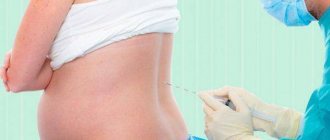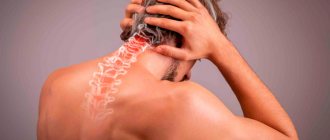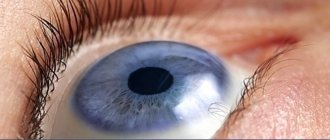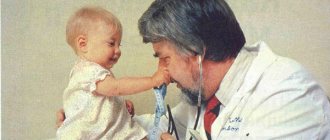General anesthesia is a serious burden on the body, which specialists try to avoid whenever possible. In some cases, spinal anesthesia is used for surgical operations. If all stages of the manipulation are performed correctly and the basic rules are followed, the risks of developing side effects are minimal. Particular attention is paid to preparation for the procedure. Still, headaches after spinal anesthesia are not uncommon. In this case, numerous methods have been developed to alleviate the condition of the victim. The main thing is not to act on your own if you have a headache after medical anesthesia. The fight against the symptom should be carried out under the supervision of a doctor.
What is spinal anesthesia
Spinal anesthesia is a type of local anesthesia. Its purpose is to turn off the nerve endings that innervate the lower half of the body. This occurs due to a disruption in the exchange of signals between the brain and spinal cord. Painkillers are injected directly into the spinal space of the spine. A small volume of cerebrospinal fluid is first removed from it so that pressure does not increase. To manipulate and puncture the dura mater, a specialist uses a special needle. He inserts it into the area between the vertebrae at the junction of the lower back and the back.
The procedure is performed or supervised by an anesthesiologist. If everything is done correctly, the approach will not only neutralize pain, but will also reduce the likelihood of bleeding during the operation. Due to these properties, local administration of an anesthetic is indicated for caesarean section, gynecological and urological interventions, and procedures in the back, pelvis, and lower extremities. If the patient has a headache after post-spinal anesthesia, this indicates a violation of the technique of performing the manipulation.
Causes of headache after spinal anesthesia
Cephalgia as a result of the use of local anesthesia appears within a few hours after surgery or the next day. The intensity of pain varies. The sensations are usually concentrated in the back of the head, can radiate to the temples or spread throughout the entire skull. The type of symptom is pulsating, bursting or squeezing. It intensifies when turning the head and in the evening.
Causes of headache after spinal anesthesia:
- removal of more than 4 ml of cerebrospinal fluid, leading to a drop in pressure;
- injection of more than 4 ml of anesthetic, leading to an increase in pressure;
- violation of the sterility of the instruments and materials used;
- performing manipulations without taking into account the structural features of the patient’s spine - scoliosis, osteochondrosis, changes in anatomy as a result of injuries;
- repeating the manipulation and getting the needle into old scars from previous procedures;
- the use of a needle with an incorrectly selected type of cut, which disrupts the outflow of cerebrospinal fluid;
- the patient’s motor activity during the procedure – head shaking causes changes in intracranial pressure;
- incorrect position of the patient during manipulation or prolonged stay in an anatomically uncomfortable position;
- a history of encephalitis, meningitis and other diseases leading to the formation of adhesions - these formations disrupt the flow of cerebrospinal fluid;
- medical errors - inserting a needle at the wrong level, getting the anesthetic into the epidural space, touching the spinal cord;
- performing manipulation against the background of contraindications.
The situation when a person has a headache after anesthesia is observed in 30% of cases. This is not always the consequence of a medical error. If the sensations are mild and go away on their own after a couple of days, there is no reason to worry. In 1% of cases, the symptom only intensifies over time and causes significant discomfort to the patient. It is necessary to combat the negative consequences of spinal anesthesia under the supervision of a doctor.
How long does a headache last after anesthesia?
Normally, cephalalgia is not observed during the use of local anesthetics, but with increased sensitivity of the body it is not excluded.
How long the symptom will persist depends on the individual characteristics of the body and the reasons for its appearance. Often the pain goes away within 1-2 days on its own and does not require the use of medications. In other cases, the length of time the symptom persists depends on the quality of care provided by specialists.
Septal splints
Recently, septal splints or intranasal splints have become an integral part of operations on the nasal septum. For septoplasty, rhinoseptoplasty and closure of perforations of the nasal septum, the final stage of the operation is the installation of septal splints on both sides of the nasal septum.
The reason splints are so popular among surgeons is a number of advantages that improve the outcome of the operation, reduce the risks of postoperative complications and speed up the patient’s recovery.
The advantages of septal splints are reflected in the table
| Traditional septoplasty method | Septoplasty using septal splints | |
| Nasal discharge | After the operation, the mucous discharge in the nose and the remaining blood dry up. Crusts form in the nasal cavity, which adhere to the nasal mucosa and are difficult to remove. They also impair breathing and cause severe discomfort in the patient in the postoperative period. | Septal splints cover the entire mucous membrane of the nasal septum and prevent the formation of crusts on the mucous membrane of the nasal septum. And due to the fact that they are made of silicone, all the pathological contents in the nose do not find adhesion and are easily washed off with a nasal shower. |
| Swelling of the mucous membrane | After surgery, the nasal mucosa begins to swell and close the nasal passages due to surgical exposure. Because of this, the patient cannot breathe through his nose, he has to breathe through his mouth, and thus develops dry mouth, etc. | Silicone splints prevent the nasal mucosa from swelling and closing, as they are very flexible and quite elastic. And thanks to special channels, the patient does not have breathing problems after the operation. |
| Adhesions in the nose | Often, upon a second visit to the doctor, the patient is informed about the formation of adhesions in the nose (synechia). The reason for adhesions in the nose is that the mucous membrane of the nasal septum, due to swelling, begins to come into contact with the mucous membrane of the lateral (opposite) wall of the nose, as a result of which they stick together, and the patient faces additional surgery. | Being a barrier between mucous membranes, splints help to avoid this complication. |
| Re-displacement of the septum after surgery | High risk of displacement. | Splints, like a plaster cast, applied to a broken limb, keep the nasal septum strictly in the midline and give it additional support. Thus, splints help to avoid such complications as a secondary displaced nasal septum. |
| Nose bleed | Frequent nosebleeds. | By holding the nasal septum tightly in the midline, the splints compress the vessels and blood does not accumulate between the layers of the nasal septum mucosa. Thus, frequent complications such as nosebleeds or hematoma of the nasal septum do not occur with installed splints. |
| Tamponation | Mandatory packing. Tampons in the nose create additional discomfort. | It is possible to avoid packing of the nasal cavity. Due to this, the rehabilitation period for the patient is easier. But it should still be remembered that only the surgeon decides whether to pack the nasal cavity or not, depending on the circumstances after installing the splints. |
How to prevent headaches after anesthesia
The degree of risk of developing complications largely depends on the qualifications of the anesthesiologist and other medical personnel. High-quality materials, specialized training and adherence to the technique of performing the procedure reduce the likelihood of adverse reactions to a minimum.
An equally important point is compliance with all recommendations by the patient himself.
Methods for preventing headaches after spinal anesthesia:
- special preparation for the procedure - if possible, 7-8 hours before the procedure, you should stop eating and smoking, and limit the amount of liquid you drink. The patient benefits from adequate sleep and walks in the fresh air;
- correct positioning of the body - to carry out the manipulation, a person can be laid on his side, but it is better if he is in a sitting position with his back tilted forward as much as possible. Another mandatory requirement is patient immobility;
- the use of specialized needles - the tool should be small with a “pencil” type of sharpening. The hole is minimal; liquor does not flow out through it;
- observance of a special regime after the session - bed rest is recommended for those who have undergone spinal anesthesia. It is necessary to ensure that the patient’s head does not hang down or rise. Additionally, it is recommended to drink at least 2-3 liters of liquid.
The appearance of a headache after anesthesia while observing the above points may indicate the presence of hidden pathologies in a person or a medical error. In any case, the fight against manifestation should be specialized. Attempts to limit yourself to taking medications alone do not always give the desired result.
Postoperative period
Nose pain
Often in the postoperative period, patients experience pain in the nose. This is due both to the surgical procedure itself and to the presence of tampons in the nose. If the pain is severe, the doctor may prescribe opioid-containing narcotic painkillers such as tramadol, promedol. Most often, patients themselves refuse opioid analgesics. In this case, doctors use non-steroidal anti-inflammatory drugs: ketorol, diclofenac, analgin. However, a contraindication to these drugs is the deterioration of blood clotting and an increased risk of postoperative bleeding, so doctors do not recommend using these drugs frequently, especially in the first days after surgery.
To reduce pain after septoplasty, it is recommended to raise the head of the bed if the patient is undergoing rehabilitation in a hospital. At home, you need to lie with your head elevated, using 2-3 pillows. It is also recommended to apply ice to the bridge of the nose and forehead for 5-10 minutes 2-3 times a day.
In the postoperative period, you should not touch your nose, especially avoid pressing on the tip of the nose. This can cause severe pain and will cause poor tissue healing in the surgical area. Also, trauma to the nose after septoplasty often causes a shift of the nasal septum to the side.
Antibiotics
During the rehabilitation period, antibiotics are prescribed to reduce the risk of infection. Usually these are penicillin antibiotics. It is necessary to strictly adhere to the duration and dose of antibiotics prescribed by the doctor.
Vasoconstrictors and nasal douche
The next day after removing the tampons, you will need to use vasoconstrictor nasal drops, for example, xylometazoline, Nazivin and saline solutions for the nose (Aqua-Lor, Dolphin). Vasoconstrictors are prescribed to reduce swelling in the nose and widen the nasal passages. This improves nasal patency during nasal shower with saline solutions. Saline solutions wash away mucus, congealed blood, and crusts from the nose, speeding up recovery. On average, vasoconstrictor drops and nasal douche are prescribed for 5-7 days.
General recommendations for the patient during the postoperative period
The postoperative period lasts for 3 weeks after surgery. At this time, the main thing is to speed up the metabolism in the body, which will speed up recovery. To do this, the patient is prescribed to drink plenty of fluids - up to 3 liters of fluid per day, and moderate walking - 3-4 hours during the day. However, you should not engage in physical exercise or strain yourself - physical activity is contraindicated during the entire rehabilitation period.
How to relieve headaches after surgery
To eliminate the symptom, you may need to take NSAIDs. With its weak and moderate severity, you can limit yourself to Diclofenac. Excruciating pain is relieved with Ketorolac or Ketorol. If these drugs do not help, the use of narcotic analgesics, for example, Omnopona, is indicated. With low blood pressure, intravenous administration of plasma expanders may be necessary. Treatment of headaches after spinal anesthesia should be carried out under the supervision of professionals. Even the use of traditional medicine and physiotherapeutic approaches must be agreed upon with the attending physician.
Epidural patches
The lack of effect when taking medications for cephalalgia after spinal anesthesia is an indication for a blood patch. The manipulation is performed using epidural anesthesia. The specialist draws some blood from the patient’s vein and injects it in the same way as an anesthetic during spinal anesthesia itself. The injected blood coagulates and clogs the hole formed by the puncture. Biological material is not rejected by the human body and does not cause any discomfort. The resulting natural seal prevents further leakage of fluid into the epidural space and the patient’s condition returns to normal.
Within 24 hours after the session, the patient should feel relief. Otherwise, the procedure is repeated and in this case its success is almost 100%. Fever is a contraindication to manipulation. Complications following an epidural blood patch are uncommon. This may include pain in the lumbar region, tissue infection, or bleeding. If the procedure is performed incorrectly, there is a risk of impaired motor functions of the lower body.
Introduction of saline solution
To combat headaches after anesthesia, saline solution is often used. In this case, the manipulation completely repeats the steps necessary to install an epidural patch. The advantage of this approach is that the product used in this case is sterile. This reduces the risk of infection to a minimum. The disadvantage of this option is the low density and increased absorbency of the composition. As a result, the pressure normalizes more slowly and the positive effect occurs later. It is also important to remember that the saline solution is administered on the same day as the anesthesia.
Aromatherapy
Inhalation of essential oils does not have a direct effect on the cause of headaches. But they relax, distract, relieve muscle tension, and help normalize blood pressure. Incense sticks and lamps work best for therapeutic purposes. To combat cephalalgia, you can use different oils, but mint, lavender and chamomile have increased effectiveness. The approach cannot be the only method of dealing with the symptom. It should complement the main therapy.
Compresses
You can fight headaches with therapeutic cold. Decoctions of mint, oregano, hops, and sage are suitable for this. First, a healing liquid is prepared from the listed ingredients according to basic recipes. It is then poured into ice cube trays and frozen. All that remains is to remove the cubes, wrap them in a towel and apply them to the part of the head in which the unpleasant sensations are concentrated.
Before going to bed, you can make a potato compress. You need to take a couple of raw, peeled tubers and grate them. Do not drain the liquid! Add a quarter glass of milk to the mixture, stir and leave at room temperature for half an hour. Strain out the thick part and set aside separately. Take a clean cloth, soak it in the resulting liquid and wring it out. Place the potato mixture on the workpiece in a dense layer. Place the resulting compress on the problematic part of the head, bandage it and put on a warm hat. Hold it until the pain goes away or at least weakens.
Medicinal herbs
Headaches after anesthesia are well relieved with herbal decoctions taken orally. Hawthorn fruits, mint, raspberry and strawberry leaves have an analgesic effect. Chamomile and lemon balm relieve stress and improve sleep. The listed components can be brewed separately or together. They are drunk in the form of tea, decoction or infusion.
How is rehabilitation after septoplasty?
With the development of technology, septoplasty has ceased to be uncomfortable. The operation begins with the patient being given anesthesia, then the doctor uses an endoscope, through a small incision, to enter between the layers of the mucous membrane and straighten the septum.
During the rehabilitation period, technologies were also created that allow the patient to avoid unpleasant sensations and breathe through the nose. Intranasal septal splints according to Reiter or splints were created. They are made of soft silicone, as it does not cause any harm to the nasal cavity and is painlessly removed from it. The splints have a seven-sided shape, which completely follows the shape of the nasal septum at the site of the operation. The essence of splints is that they keep the septum in the midline. After the operation, while the patient is under anesthesia, a silicone splint is sewn on.
Splints come in different modifications. Depending on the shape of the nose, they can be either large or small. A tube can also be inserted between the silicone of the splint, through which the patient can breathe immediately after the operation. The septal splint stays in the nose for about 5-7 days, during which time the nasal septum takes its position.











